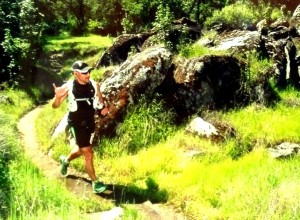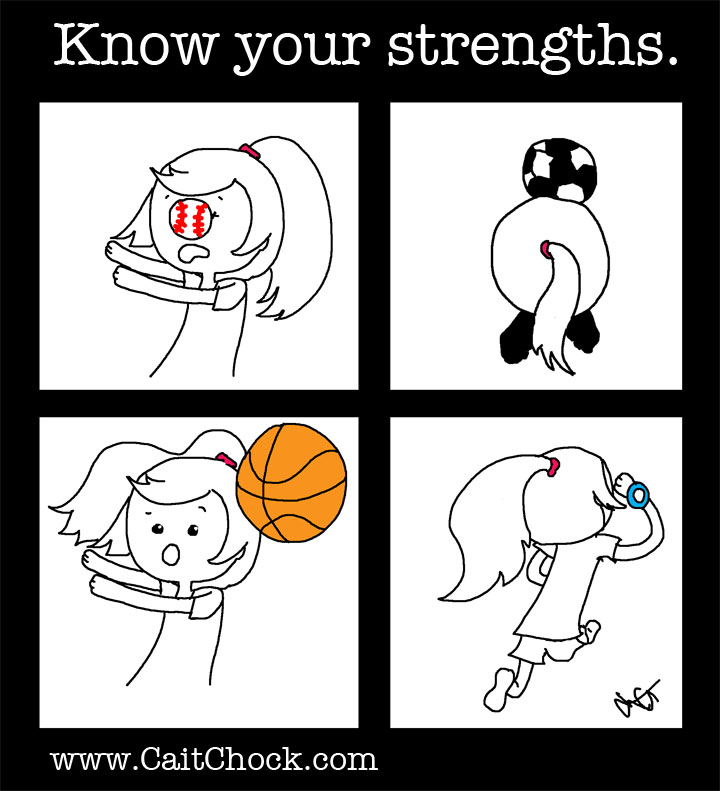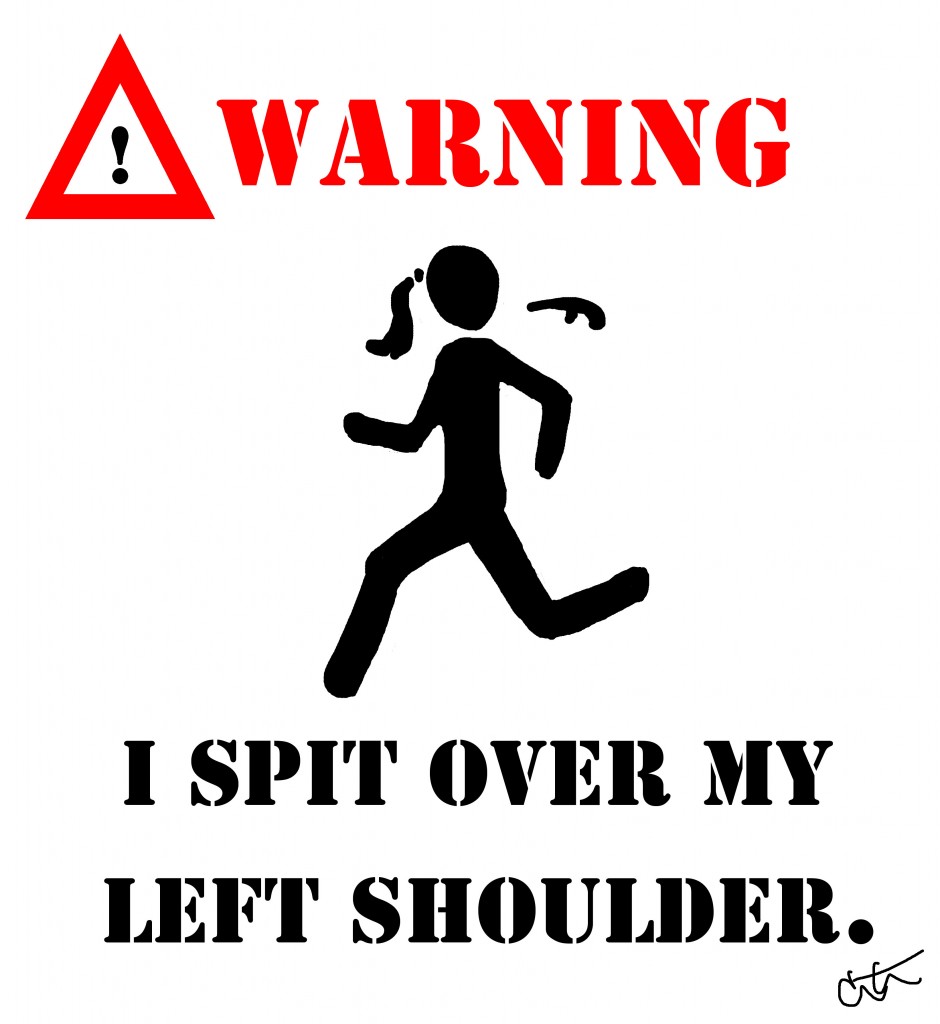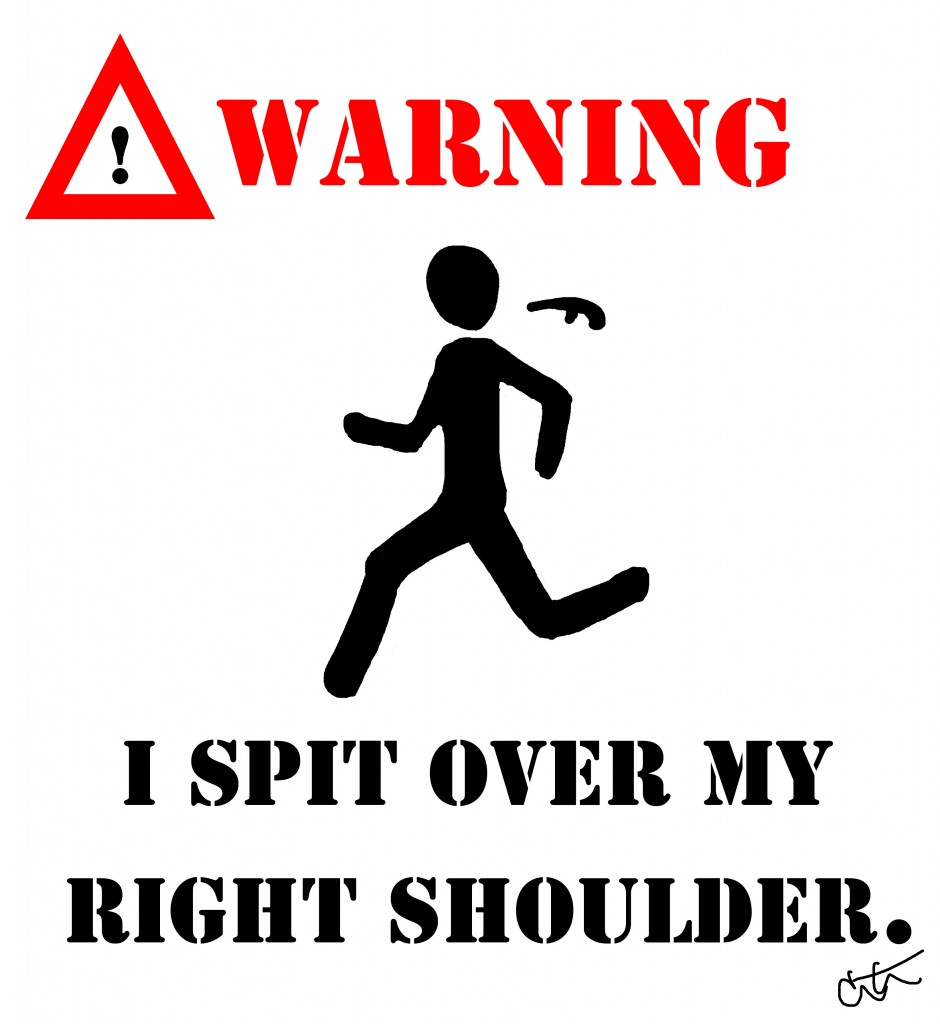new posts in all blogs
Viewing: Blog Posts Tagged with: cross country, Most Recent at Top [Help]
Results 1 - 7 of 7
How to use this Page
You are viewing the most recent posts tagged with the words: cross country in the JacketFlap blog reader. What is a tag? Think of a tag as a keyword or category label. Tags can both help you find posts on JacketFlap.com as well as provide an easy way for you to "remember" and classify posts for later recall. Try adding a tag yourself by clicking "Add a tag" below a post's header. Scroll down through the list of Recent Posts in the left column and click on a post title that sounds interesting. You can view all posts from a specific blog by clicking the Blog name in the right column, or you can click a 'More Posts from this Blog' link in any individual post.
This weekend they will be running the NCAA Cross Country Championships. The pinnacle of excitement for college cross country, I’ve done a few pieces highlighting a few of the front runners vying for the individual title: Shelby Houlihan, Crystal Nelson, and Patrick Tiernan.

Whether you ran cross country in college, or even went to college, or not I urge you to read them because among all of there runs a similar theme: cross country is unique because it blends the individual component of running with the team aspect. As every runner knows, ultimately, a race is against beating yourself, and while track does have a team scoring element, it is in no way like cross country’s.
Here, there is a team of seven, five runners score but don’t think the sixth and seventh man (or runner woman) don’t count. You need all seven because:
1) You never know: We’ve all had days where the gun goes off and it’s clearly not your day. If you’ve got one of your ‘usual’ top five runners amidst a horrible race, you better hope you can rely on your sixth or seventh to step up.
2) The tie: There are classic stories where it comes down to a tie breaker and a win was decided on the number sixth runner…you can bet that runner who proved a win for their team was celebrated that night!
Most importantly, while running is a test against yourself, there is an incredible bond that is formed between training partners. We’ll call is a bond build on suffering, and when you ‘click’ with certain training partners or groups that’s where the magic happens.
A partner, or team, can pull you to YOUR best.
Through the training season, time miles, the work you put in, if alongside a person/team, therein breeds a remarkable enthusiasm. The success of one is a success of the whole, and in the middle of the pain of race day you can dig a little deeper knowing that you’re racing for yourself but also for your team, your friends, the ones who are pushing through their own pain for you too.

Runners graduate, move on, change teams, but the component of having a training partner there to push you remains the same. Out in the ‘real world’ runners have many options in terms of running: solo, with a friend, with a group, finding a team, etc. Each runner decides where running fits into their life and also what ‘kind’ of running they’re doing.
Some crave the solace of a run with no one but themselves, their thoughts, and the pounding of their feet. Ample time for thinking.
Sometimes it is important to be able to grind out a tough workout by yourself because there is an important part of mental training that must occur.
But…I will say if you want to stretch yourself I urge you to try meeting with at least another person for some of those hard workouts. Ideally, a person a tad faster than yourself.
You see, running is ultimately a test against yourself…BUT, it’s because your MIND is (most often) your greatest obstacle. Having another running there ahead of you, giving you chase, is usually just enough to trick your mind into shutting up and letting your BODY prove you are capable of more.
——-
Lots of other new articles on my WRITING PAGE
I don’t update my blog daily but do on my INSTAGRAM and TWITTER FEEDS
To purchase prints of my artwork head to my ART tab! Thank you for respecting the amount of time and creative work that goes into my drawings and not using them without permissions. 
——
1) Did you run for a team ever, be it in high school, college, or beyond?
2) How often do you run by yourself? With anyone else? With a team?
3) Will you make a goal of meeting someone for a hard workout in the not-so-distant future?

.jpeg?picon=3498)
By: Cait,
on 8/30/2014
Blog:
Cait's Write...
(
Login to Add to MyJacketFlap)
JacketFlap tags:
tips,
running,
goals,
training,
cross country,
workouts,
hill running,
treadmill running,
cross training,
Add a tag
Runners are constantly climbing. It’s in our nature to always have a goal we’re working towards, always wanting to push ourselves to do better. Whether it be chasing new PR’s, challenging yourself to expand your race distance range, or even after we’re past our ‘PR-PR’ years, redefining the times and bests (weekly, yearly, masters, etc.) bests.
Diversity. Fitting as it is now cross country season that we talk about diversifying your running and climbs. Cross country thrives on both. I’ve done posts on just how awesome hills are at improving your strength and power, which translates to speed. What I haven’t talked too much on are prolonged hill climbs.

The long climb, yup. We’re talking taking your tempo runs to the trail, or inclined treadmill if you don’t have a stretch long enough outside. I’ve previously featured the man-beast that is Michael Wardian and he’s no stranger to treadmill running.
While he’s one of the World’s best ultra and trail runners, a major chunk of his miles are done on the treadmill so he can fit his runs in around his family’s (namely his kids’!) schedules. Wardian loves a good, long climb.
He makes sure to do hill work a few times a week and, “for me that means hours of running up vertical inclines, sometimes fast, sometimes just a long grind, but always pushing to get better.” Wardian is an ultra runner after all.
Another big fan of prolonged uphill runs is Sage Canaday, a staple workout for him is an uphill tempo run. Canaday is another World leading ultra runner [check out my feature on him HERE], residing in Boulder, CO he has no shortage of trails to mountain goat up.

Yo, that’s my rockstar dad running 50 miles! :)
Even if you’re not one of the best in the World, taking advantage of prolonged hill climbs will benefit you.
Coach Brad Hudson of the Hudson Training Systems, coaching both elites and all levels of runners, regularly incorporates uphill tempo runs for his runners.
Try It:
Take your next scheduled tempo run to a hill, keep the distance the same and adjust based on effort. [Captain Obvious: Your times aren't going to mean much, so go off of effort.] I’d suggest going 4-5 miles.
No hill? No problem…take it to the treadmill. For a moderate climb set the grade to 4% for your tempo run and again, go off of effort. Do your warm-up and cool-down at 1.5%, as that’s the equivalent to running outside on the flats…after you jack that incline up and finish your tempo run, upon lowering you’ll see just how much ‘easier’ the same pace will feel at 1.5%!
If you’re looking for a steeper incline, Captain Obvious tells us you can just elevate the treadmill. 
Another twist courtesy of Coach Hudson would be to make your hill climb tempo progressive, begin the workout at a 2% grade and have it up to 6% by the time you finish.
Life’s a climb after all. For runners, we take that both figuratively and literally. 
——–
More workout posts HERE
Need some motivation to get ‘er done…look HERE
Sweat hard, recover hard… #SweatsintheCity style, Baby!
——–
1) Are you running cross country season?
2) How do you incorporate hill work into your training?
3) Have you done incline tempo/threshold work?

The 2014 World Cup has begun!! Now here’s a fun fact, soccer was my first sport. Gosh how I loved it, I played for seven years and looked forward to every Saturday’s game (confession: the after-game snack a LOT too!) like nobody’s business. Why did I stop after seven years?? Enter exhibit A:

I sucked. Like I REALLY sucked. I can vividly remember scoring my first goal…mostly because it was my first and last. I don’t even have an excuse for one goal in seven years, like I played goalie or defense…nope, I was a forward and mid-fielder. Right where one with any iota of coordination would be set RIGHT up to score a goal.
Hey, at least I can own my suckiness. I know I can handle turning left and running in a straight line. So I stopped soccer when, totally honest here, the only team I could still make was the rec team. The qualifications for making the rec team is having your mom or dad write the $35 check to the community rec league. I was in junior high at the time, meaning my rec team would be all the 4th and 5th graders still too young for the Comp and Select teams.
That’s when my mommy-o suggested I try cross country. I thought it was a traveling team, “Cool!! I get to go touring around…I’ll bet I’ll find lots of fun new foods to try!” I though. Yea, even at that age it all comes back to foods and treats, right? I was in for a shock. No traveling done unless you run there. I got tripped pretty bad my first practice and later had to pick gravel out of scars I still have today.

i run…do the math.
My first race I spent hovering over a bush for about 15 minutes certain I’d barf. I didn’t, but my dad still has a picture of me hovering over the bush. The thing is though, I kinda liked it. I sucked at anything with ‘real’ coordination skills but I kinda liked that I could grimace in pain and pass some girl up a hill. I would like to also mention I sucked at running too. That girl I passed up the hill, maybe was the only girl I passed. Like I was slow, but in my mind I didn’t fully grasp 1) how slow I was 2) how
HORRENDOUS my form was!! Gosh, even my mom in later years admitted, “Yea, I’ll never forget trying not to laugh the first time your little club coach saw you run and remarked that you looked crazy.”
I owned my crazy then and I own it now though!  But hey, I stuck with this whole running thing. I do promise I kinda really hated it the first couple weeks, but I swear there was like this insane shift after you get past the ‘hump’ I call the hazing weeks. Basically once you become consistent enough to where your body and muscles don’t go into the shock of thinking, “Wait, she’s running…that must mean there’s a bear chasing her!!” resulting in unwalkable sorenesses the next day. Get past that and you’re golden.
But hey, I stuck with this whole running thing. I do promise I kinda really hated it the first couple weeks, but I swear there was like this insane shift after you get past the ‘hump’ I call the hazing weeks. Basically once you become consistent enough to where your body and muscles don’t go into the shock of thinking, “Wait, she’s running…that must mean there’s a bear chasing her!!” resulting in unwalkable sorenesses the next day. Get past that and you’re golden. 
Look at running, turning into about my favorite thing to do. Shall we just be thankful that I actually DID have a little too much pride to out-age my rec teammates by four years? Best $35 my mommy-o didn’t have to spend. 
———-
My latest on RunBlogRun: Phoebe Wright Can’t Be Stopped! <--- this is actually one h*ll of an inspiring story and she's HILARIOUS!! Read the story then check her blog and twitter feed!!
Also on Want to Run in College? This is what it takes: Hakon DeVries of the University of Kentucky
———–
1) Are you a big soccer fan? Will you be unreachable and completely ignore any and all of your surroundings until the World Cup is over?
2) Were you good at other sports besides running?
3) Have you ever barfed after a race?
Hey, I hovered over that bush but nothing came up. Never have thrown up after a race or workout, that one time over the bush was the closest I’ve come.

Unless you’re racing on a track, there’s SOME kind of terrain you’ll need to be prepared for come gun-time. Even during track season athletes have much to gain from varying the terrain on their workouts.
- Power and Speed: Hills build strength and when taken to flats that translates to speed. That same kind of logic applies to doing repeats on grass, the times may be ‘slower’ but you’re working harder and building strength.
- Injury Prevention: Running on softer, more forgiving surfaces helps reduce impact and thus lowers your chances for injuries in the long-term.
- Diversity: Running is a very repetitive action and mostly only working in a single, horizontal plane. At least by varying things slightly you’re able to give your body a bit of diversity; if you fail to do this, smaller muscles get weak and imbalances become injuries in waiting.
Those are all general reasons why mixing up your running terrain is a good idea, but if you know your actual race course will have key elements you’ll need to be prepared for, it’s even more important to introduce those same obstacles in training.

Hilly Courses
- Uphill Repeats: It take power to get up those hills; including uphill repeats into your routine may seem like an obvious but not all runners actually DO hill work, or they don’t mix-up the kind of work that they do. Think of hills in a three-pronged approach, similar to your regular running workouts. 1) Do 100-200 meter hill bursts, allow for full recovery between each repeat; this is your speed session for the week. 2) Longer, 600-1600 meter hill repeats for your endurance-focused interval sessions. You could also do tempo runs uphill (on a treadmill set on a grade if you don’t have an actual course). 3) Including rolling hills into your easy days ‘sneaks’ hill work in.
- Downhill Repeats: Many can overlook just how taxing a lot of downhill on your race course can be. If your race has a significant amount of downhills (Hello, Boston Marathon!), be sure to get used to running on the decline; your quads will be working even if you don’t ‘feel it’ right away. You can include some downhill repeats in your training; just be careful in terms of injury because downhill running does increase the forceful pounding of running.
- Form: Running hills makes it even more important to have good form; when running uphill maintain the same effort that you would but decrease your stride length. When running downhill, make sure that you’re not tensing up and causing yourself to ‘brake;’ rather, relax and let the momentum of the decline help do some of the work for you.

Trail running
- Ankles and lower legs: Trail running is about as diverse as running can get, twists, turns, awkward foot-plants aplenty. Here is where you need to be sure your ankles and feet are used to landing in various positions. The way to do that is, well, running trails, taking turns, and including mobility work outside of running.
- Core and Mobility: To reduce your risk for injury when running, you want to have a strong core, be flexible, and have as much range of motion as possible. Schedule time for strength training, dynamic stretching, and drills; not only will it help safeguard you against injuries it will improve your running performance.
Tracks, Roads and the Elements
- Tangents: Some math logic here, but running longer adds more time to your race results. Road races are measured off of the shortest possible marked distance, so look for those tangents and don’t run wider around turns than you have to. On the track, unless you’re going to be boxed in, do your best to not needlessly wander into outer lanes.
- Drafting: Even on the calmest of days drafting makes a difference, mentally it’s much ‘easier’ to sit behind someone else and let them do the work. If it’s especially windy, find a body and tuck in behind them!
- Weather Conditions: The conditions of race day can make a HUGE difference in your performance; not only should you take these into consideration for your race-day pacing goals but train in the same kind of conditions. For cold races be extra certain you do a full warm-up to make sure your muscles are properly warm and ready to hit those faster paces.
Until the day that all races are held on treadmills, runners should be mixing up the terrain of their workouts and runs. By tailoring your training to your specific race course you’ll be setting yourself up for even better results. And hey, who doesn’t want to run that much faster and have a bit of an edge over their competition? 
1) How do you train for your course? If it’s for the track, how do you add diversity to your workouts?
2) Do you prefer road races, track races, cross-country, or trail races?
3) How do you plan, adapt, or prepare for various weather conditions?


Have you checked out these signs lately, it sure looks like runners all over are getting offered some pretty sweet deals?!

Watch out who you line up against at the track…nevermind, I’m sure you’ll be the one offering up the free butt kickings rather than the other way around.

Mud at the cross-country course is a given, but you decide whether the splattering will end up on your frontside or your backside. Same goes for all those trail runners.
But look-out for these hazard signs..don’t want to wind up in the Spit Zone when a rogue loogie flies your way.


Stay safe and fast my runner peeps! 
1) Which do you prefer more, track or cross-country? Or are you more in favor of trail racing, road racing?
2) Spitting zone, which shoulder do you typically send them loogies over?
3) If you had a sign posted after your last run, what would it read?


By: Stacy Dillon,
on 4/27/2010
Blog:
Welcome to my Tweendom
(
Login to Add to MyJacketFlap)
JacketFlap tags:
basket ball,
Borzoi Book,
water polo,
Friendship,
sports,
baseball,
legends,
swimming,
ghost stories,
summer camp,
2010,
Alfred A. Knopf,
cross country,
copy from local library,
Add a tag
 Eleven-year-old Riley Liston isn’t exactly a jock. Don’t get me wrong, he is good at some sports. Especially the kinds that involve distance and endurance like cross-country and swimming, but he’s not standard fare for sport’s camp.
Eleven-year-old Riley Liston isn’t exactly a jock. Don’t get me wrong, he is good at some sports. Especially the kinds that involve distance and endurance like cross-country and swimming, but he’s not standard fare for sport’s camp.
Camp Olympia turns out not to be quite like the brochure. The “arena” was nothing more than an old barn with a cement floor and the “stadium” a plain old field with the chain link backstop. “The Camp Olympia Institute for Sports and Nutrition” was a smoky, greasy cafeteria that serves food that the kids don’t even want to eat! (They stock up on snacks at the Trading Post to survive.)
But Riley figures out a way to get by. Since all of the campers have to participate in the team sports, Riley simply tries not to screw up. All during the two weeks of camp the bunks are earning points to try to win the Big Joe Trophy, and Riley doesn’t want to be the camper who costs Cabin 3 the cup.
Rich Wallace has written a summer camp story that will snare sports enthusiasts and non-sports enthusiasts as well. The camp setting is familiar to many kids, and if not, readers will take their first journey along side of Riley. Since the sports in the camp are varied, readers will get a glimpse of softball, basket ball, water polo, cross country, and even hot dog eating contests. Readers get to see Riley’s confidence grow as the days go by. All of the trappings of summer camp are in the mix as well, including ghost stories, a famously huge and famously unseen resident snapping turtle, and cabin trashing shenanigans.
Pack this in the bag of a camp going guy you know this summer!
Day two dawned cold. Dawned cold! (Haha Lame Punnery) We all slept well, lulled to sleep by the gentle rumblings of the nearby semis generators, though the lights of the rest stop were a bit intrusive. We'll likely make curtains for the E our next modification. I've made makeshift ones a couple of times before but they've always been kind of half-assed and shabby or unwieldy.
We were meeting our


![]()















Wow, I can almost taste the sweet and sour chicken. It was a lousy day in ND...I think you captured it well. I'm glad you stopped if even for a short time. And it was nice to meet the family.
I'm really glad to hear that everyone got back safely if not happily. Long trips are always a pain. And driving across the entire USofA is a long trip if there ever was one. It's not something that I think I'd like to do if I didn't have a lot of money and time.<br /><br />I love how Pooka looks just as dead/bored as you sounded to be near the end of the trip. Nice shot!
Yeah, Steve, thanks for not calling and telling me my one chance at meeting my soul-mate had come and gone! I could have swung by the house for a little bit.<br /><br />Kris, if Stormalong ever crosses our great state again. (I recommend a June trip) Please let Uncle Steve know. I'd like to meet you even if for a few minutes, at least.